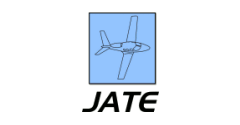Abstract
To provide a context for the potential threat of unmanned aircraft systems (UAS) sightings on airport operations, this paper compares the characteristics of UAS sightings with two common airport threats: wildlife strikes and runway incursions. This study analyzed over 60,000 events in a three-year period (September 2016 to August 2019), including 6,551 UAS sightings from the Federal Aviation Administration (FAA) UAS Sightings Report database, 47,574 wildlife strikes from the FAA Wildlife Strike database, and 6,041 runway incursions from the FAA Runway Safety database. The results suggest both similarities and differences among the airport threats. Both UAS sightings and wildlife strikes vary by time of year and time of day. UAS sightings and wildlife strikes farther from the airport occur at higher altitudes than sightings and strikes occurring close to the airport. However, UAS sightings are reported at higher altitudes than wildlife strikes, and the distance of UAS sightings from the airport is farther than that of wildlife strikes, in general. The severities of UAS sightings and runway incursions are similar. Pilots take evasive actions in three percent of UAS sightings, and runway incursions of severity A and B are also rare. Pilots of general aviation (GA) aircraft reported the most UAS sightings, and GA operations are also involved in more runway incursions. Considering the kind of airport affected, UAS sightings and wildlife strikes are more common at primary airports, notably large and medium hub airports, whereas runway incursions are more common at reliever airports. Generally, UAS have had a minimal impact on airport operations despite their growing prevalence, which reflects the overall success of integrating this new airspace user into the national airspace system.
Recommended Citation
Wang, Cheng and Hubbard, Sarah M.
(2022)
"A Comparison of Airport Risks: Unmanned Aircraft Systems (UAS) Sightings, Wildlife Strikes, and Runway Incursions,"
Journal of Aviation Technology and Engineering:
Vol. 11:
Iss.
2, Article 4.
Available at: https://doi.org/10.7771/2159-6670.1251


